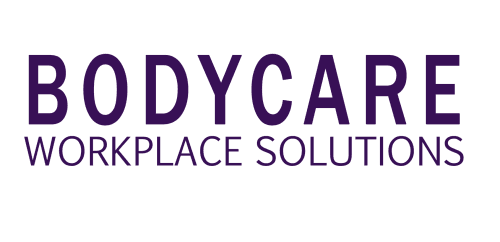Workplace mental health and wellness – Why is it important?

Although many workplaces run a plethora of initiatives that focus on raising awareness and discussing the importance of health and safety at work, it is equally important to provide a platform for your organisation to engage in activities, education and discussion surrounding the importance of mental health within the workplace. This will encourage people in your workplace to maximise their health potential, build resilience and improve recovery from mental health issues in the long term.
Why is workplace mental health important?
Mental illness in Australia has a significant impact on our society individually, socially and economically. A study by the Australian Bureau of Statistics revealed that approximately one in five Australian adults aged 16 to 85 years will experience at least one of the common forms of mental illness throughout any given year and 45% will experience a mental health or substance-use disorder in their lifetime. A survey of over 5000 workers indicated that 25% of workers took time off each year for stress-related reasons[1]. These figures result in a drastic drain on the Australian economy with costs ranging from $10 to $15 billion annually due to health expenses, reduced workforce participation and decreased productivity in the workplace[2].
What causes workplace mental health issues?
It is often presumed that a worker’s mental illness develops outside of the workplace. However, a worker may develop mental illness prior to employment or during employment. An ‘unhealthy’ work environment or a workplace incident can cause considerable stress and exacerbate, or contribute to, the development of mental illness[3]. Mental illness affects each person differently. This is why it is important for all individuals in the workplace to be aware of potential contributing factors to mental health issues and strategies to maintain a positive pathway to mental health and encourage early reporting of symptoms.
One of the major contributors to mental illness is a feeling of excessive stress. Stress can be very subjective so what one person may find to be stressful may not affect or be relevant to the next person. Research shows that job stress and other work-related psychosocial hazards are emerging as the leading contributors to the burden of occupational disease and injury in Australia[3]. Mental health workers’ compensation claims cost approximately $145 million annually and work pressure is cited to account for around half of all psychological injury claims[2]. That being said, most workers successfully manage their illness without it impacting their work. Some may require workplace support for a short period of time, while a minority will require ongoing workplace strategies.
The risk factors differ in every workplace but commonly include individuals having a lack of autonomy in their role, poor job clarity, a lack of training/knowledge to do their role or working in isolation.
Warning signs that you or someone you work with may be struggling with mental health
The following warning signs may indicate that you or someone you work with may be struggling and that it’s time to reach out:
- Constant feelings of sadness or discouragement
- Sleeping too much or not at all
- Withdrawing from your work colleagues, friends or family
- A decline in your work habits or performance
- An increase in the use of alcohol, drugs or medications
- Emotional outbursts
- The commencement or an increase in the intensity of work or family issues; and/or
- The commencement or an increase in the severity of physical problems
How to improve mental health at work?
Research shows that there is a direct correlation between physical health and forming positive emotions[4]. Building positive physical health experiences has been proven to result in increased self-efficacy, the ability to self-generate positive emotions, build resilience and make an individual feel more socially connected. Having strong resilience in the workplace is fundamental to maintaining positive strategies for maintaining mental health and gives individuals the ability to self-generate positive emotions from physical activity, which forms a biological resource for habitual, long-term physical and psychological health benefits. This is why it is important to exercise for at least 30 minutes a day and try to go for a walk on your lunch break, if possible.
Positive connections and relationships play a big part in maintaining your mental health so make sure to catch up with your friends or colleagues for a coffee and switch off when you leave work to enjoy quality time with friends and family.
To manage stress or information overloading, make sure that you are getting enough sleep. Plan your workload for the day so that you can prioritise important tasks and give yourself reasonable timelines to complete them. It might be as simple as listening to music to relax your mind. Practice being mindful by focusing on the present, tuning in to your senses and intentionally listening to people.
Lastly, remember that it is OK to ask for help when you need it.
Recognising and promoting mental health is an essential part of creating a safe and healthy workplace. Importantly, managers and workers both have an equal responsibility in building a safe work environment.
Workplace Mental Health Programs by Bodycare
To get your workplace involved with mental health initiatives or to enquire about running an information session about mental health in your workplace, please contact Claire Ebstein from Bodycare Workplace Solutions by emailing claireebstein@bodycare.com.au or call 1300 222 639.
[1] https://www.humanrights.gov.au/publications/2010-workers-mental-illness-practical-guide-managers/1-mental-health-workplace
[2] Department of Health. (2009) Fourth national mental health plan: an agenda for collaborative government action in mental health.
[3] LaMontagne AD, Keegel T & Vallance D (2007) Protecting and Promoting Mental Health in the Workplace: Developing a Systems Approach to Job Stress, Health Promotion Journal of Australia 2007,18, 221–8 (citing Marmot M, Siegrist J & Theorell T (2006) Health and the Psychological Environment at Work, Social Determinants of Health 2006, 97–130)
[4] Kok, B. E., Coffey, K. A., Cohn, M. A., Catalino, L. I., Vacharkulksemsuk, T., Algoe, S. B., … & Fredrickson, B. L. (2013). How positive emotions build physical health perceived positive social connections account for the upward spiral between positive emotions and vagal tone. Psychological science, 24(7), 1123-1132.


